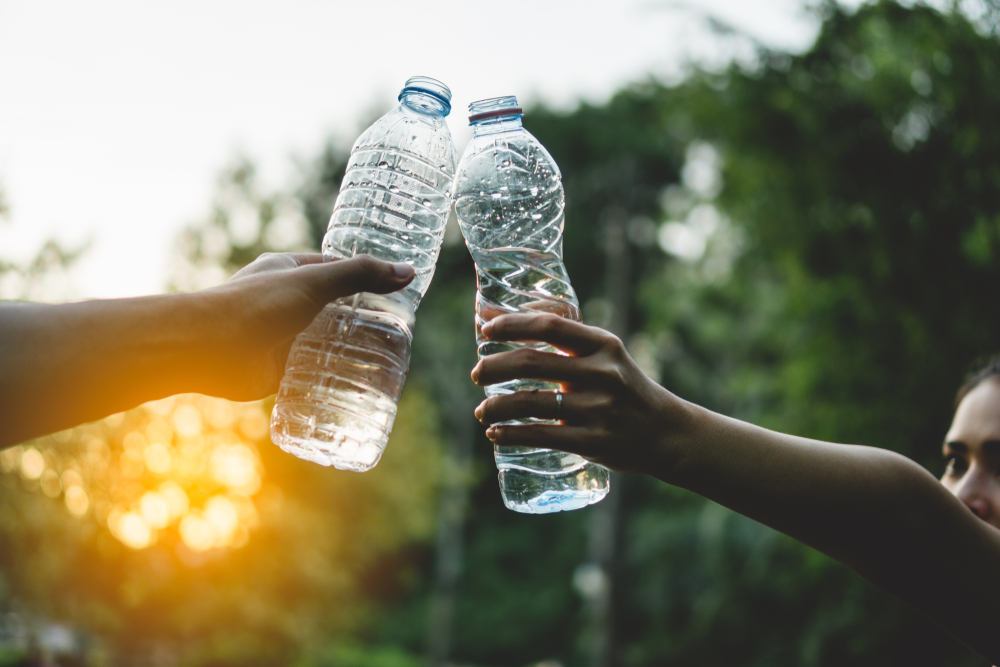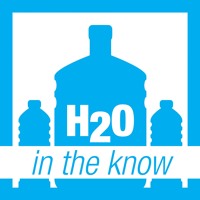International Bottled Water Association | NEWS RELEASE |May 19, 2020
Bottled water consumption grows, sugary drinks decrease, 10 years in a row
 Alexandria, VA – Bottled water has once again reaffirmed its position as America’s favorite drink, outselling all other packaged beverages in 2019, new data from the Beverage Marketing Corporation (BMC) shows.
Alexandria, VA – Bottled water has once again reaffirmed its position as America’s favorite drink, outselling all other packaged beverages in 2019, new data from the Beverage Marketing Corporation (BMC) shows.
Consumers are increasingly choosing bottled water instead of less healthy packaged drinks. The BMC data detail how, since 2010, bottled water has steadily increased in sales volume each year, while consumption of carbonated soft drinks has declined. Bottled water outsold soda for the first time in 2016 and has done so each year since (see chart below).

Americans consumed 14.4 billion gallons of bottled water in 2019, up 3.6 percent from 2018. Bottled water’s retail dollar sales also grew in 2019, up 5.2 percent reaching $34.6 billion. And per capita consumption rose 3.1 percent to 43.7 gallons, BMC data show.
For over a decade, the majority of the growth in bottled water consumption relative to other beverages has come from people switching to bottled water from other less-healthy packaged drinks (66 percent since 2006). And nine out of ten Americans (91 percent) expect bottled water to be available wherever other drinks are sold, according to a survey conducted on behalf of the International Bottled Water Association (IBWA) by The Harris Poll.
This healthy consumption shift from sugary drinks to bottled water could also work in reverse. If bottled water is not available, 74 percent of people say that they will turn to other packaged drinks, not tap water, The Harris Poll found.
“People are choosing to drink fewer calories and making that healthy choice has the added benefit of helping the environment. Not only are bottled water containers 100 percent recyclable (including the caps) but they also contain much less plastic than soda and other packaged beverages,” says Jill Culora, IBWA’s vice president of communications.
Soda containers, on average, use 142 percent more PET plastic than bottled water containers (23.9 grams vs. 9.89 grams for 16.9-ounce containers). Soft drinks and other sugary beverages need thicker plastic containers due to their carbonation and/or bottling processes.
Even with continuing growth and increased consumption, bottled water still has the smallest water and energy use footprint of any packaged beverage. On average, only 1.39 liters of water and 0.21 mega joules of energy are used to produce 1 liter of finished bottled water (this includes the 1 liter of water consumed). Source: IBWA_ExecSummary_14Nov2018.pdf
A recent report from the American Chemistry Council (ACC), conducted by Franklin Associates, examined the overall impact of plastics on the environment, compared to other materials. The study looked at energy demand, water consumption, solid waste, global warming potential, eutrophication potential, smog formation potential, and ozone depletion potential. The ACC report concluded that, when comparing materials throughout the entire life cycle of a package, plastics leave a much smaller environmental footprint than alternatives, such as glass, aluminum cans, and paperboard cartons. Perhaps the most significant finding from the ACC report is that alternatives to plastic beverage containers would produce about 60 percent more greenhouse gas emissions—a major contributor to climate change. See: https://plastics.americanchemistry.com/Reports-and-Publications/LCA-of-Plastic-Packaging-Compared-to-Substitutes.pdf
According to BMC Executive Director John G. Rodwan, Jr., bottled water’s rise coincided with, and contributed to, major changes in consumer preferences for refreshment and rehydration. “As the quintessential portable and affordable beverage, bottled water prompted the formation of new habits and even new usage occasions. Suitable for consumption at any time of night or day, and not necessarily requiring to be kept ice cold. Bottled water has become the preferred beverage option not only for consumers aiming to reduce caloric intake or lessen artificial sweetener usage, but also for consumers of all kinds. Carbonated soft drinks lack these attributes,” he says.
“Consumer preference for healthy hydration is really good news for public health,” says Culora. This is particularly important as the nation continues to experience high rates of obesity, diabetes, and heart disease. “And the bottled water industry is using much less plastic resin in its packaging, which is good for the environment. But to recapture this plastic for use in new bottles will require increased recycling rates.”
PET plastic bottles are 100 percent recyclable and can be recycled over and over again. For many years, bottled water companies have been increasing the use of recycled PET (rPET) and recycled HDPE (rHDPE) in their containers. Many bottled water companies have embraced using rPET packaging, offering their products in containers that are made of 50, 75, or even 100 percent rPET.
But to keep that trend going, bottled water companies need to have a sufficient amount of rPET and rHDPE to use it. Consumer access to—and participation in—convenient recycling programs help determine the supply of rPET and rHDPE. If more people recycle, then the availability of rPET and rHDPE will increase as well.
“The bottled water industry is committed to helping people make healthier choices,” said Culora. “The demand for bottled water is evident, as this safe, healthy, great tasting and convenient product continues to be America’s most popular packaged beverage, by volume.”
Whether it’s at home, in the office, or on the go, IBWA encourages all consumers to make healthy hydration a part of their lifestyle and select bottled water as their beverage of choice and always recycle their empty containers—with the caps on.
For more information about bottled water, visit IBWA’s website: www.bottledwater.org.
###
Media Contact:
Jill Culora
jculora@bottledwater.org
703.647.4609
The International Bottled Water Association (IBWA) is the authoritative source of information about all types of bottled waters, including spring, mineral, purified, artesian, and sparkling. Founded in 1958, IBWA’s membership includes U.S. and international bottlers, distributors and suppliers. IBWA is committed to working with the U.S. Food and Drug Administration (FDA), which regulates bottled water as a packaged food product, to set comprehensive and stringent standards for safe, high-quality bottled water products.
In addition to FDA regulations, IBWA member bottlers must adhere to the IBWA Bottled Water Code of Practice, which mandates additional standards and practices that in some cases are more stringent than federal and state regulations. A key feature of the IBWA Bottled Water Code of Practice is a mandatory annual plant inspection by an independent, third-party organization.
IBWA is proud to be a partner with Keep America Beautiful and a supporter of Drink Up, an initiative of former First Lady Michelle Obama and the Partnership for a Healthier America (PHA), which encourages Americans to drink more water more often – whether from the tap, a filter, or in a bottle. Choosing water is always the healthy choice.
